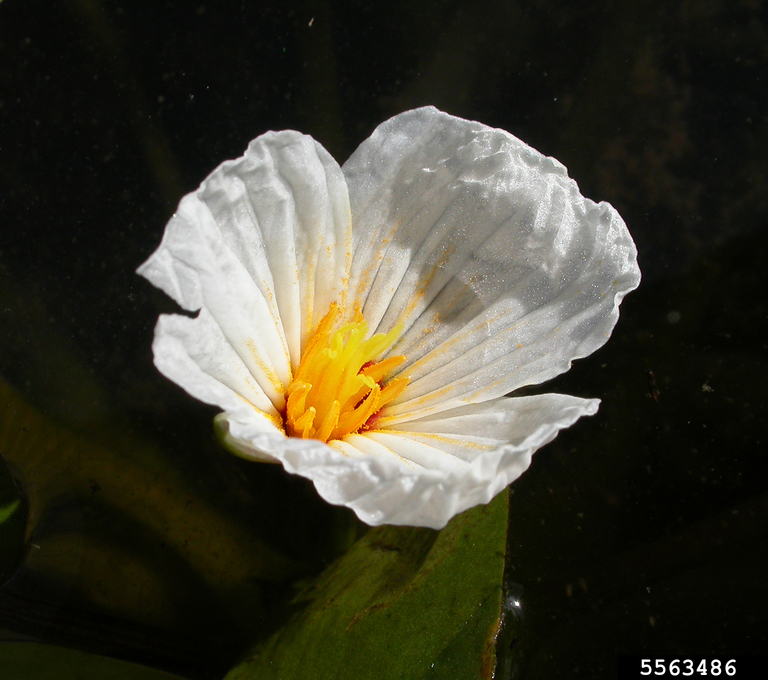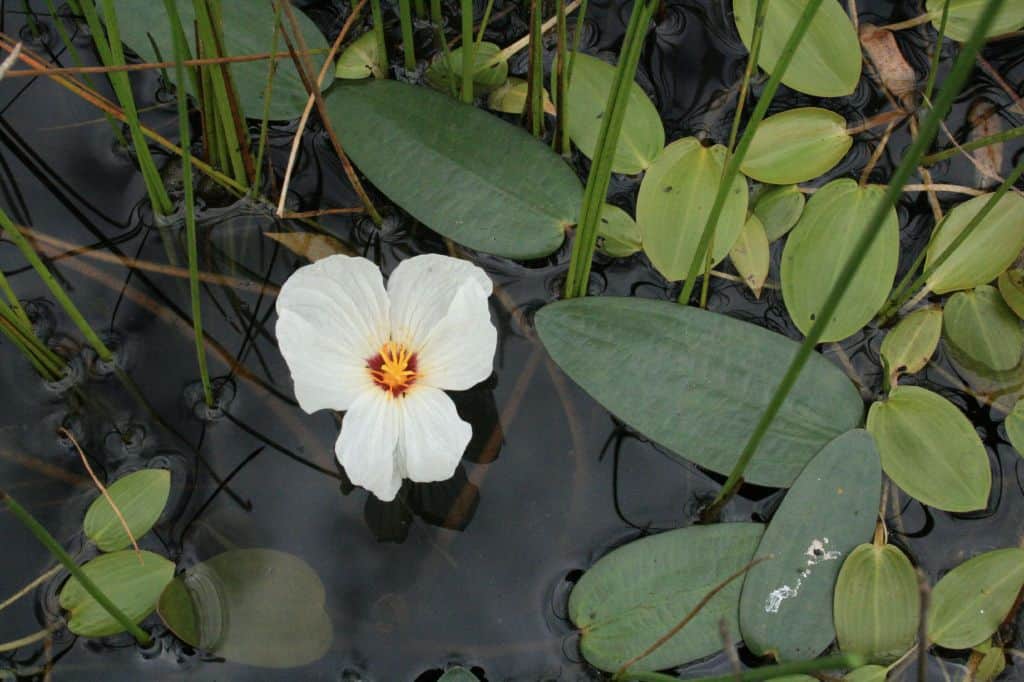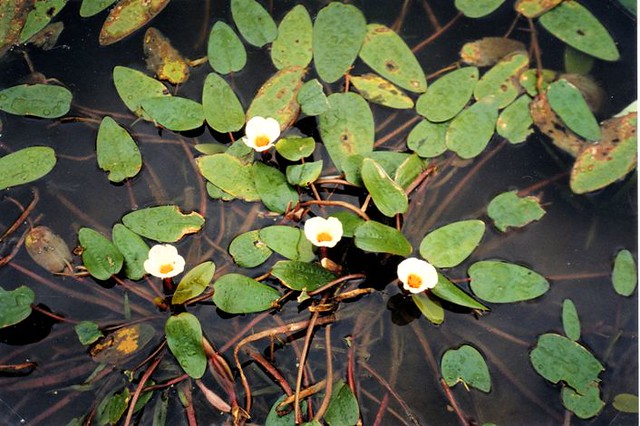Swamp Lily
weed identification
Plants produce two types of flowers. One does not emerge and self-pollinates without opening. The other is held, above the water, on a stalk up to 30 centimetres long. These visible blooms are five centimetres across, three-petalled, cream with a dark reddish-purple centre and appear between November and March. Leaves are floating and submerged. The visible leaves are strap-like, up to 16cm long and 6cm wide.
Slow-moving fresh water, or stationary water of ponds, dams and lagoons to about 1m deep. Often in water with high nutrient levels.
Reproduces via seed. Germinates readily on mud and in warm shallow water. Flowers are able to self-pollinate.
Dispersed by water movement or insect pollination.
Attractive ornamental flower. A food source for Aboriginal people.
What does Swamp Lily look like?
Disadvantages of Swamp Lily
Full coverage of a pond or dam by Swamp Lily is uncommon but can cause significant problems such as:
- Reduce oxygen diffusion
- Shades out all submerged vegetation preventing further growth and causing death
- Block drainage channels
- Causes fish and other aquatic life death
- Provides breeding ground for mosquitos
- Changes the water chemistry to favour harmful algae and bacteria
treatment
AQ200 Aquatic Herbicide + Wetting Agent – Chemical Herbicide designed to kill free floating weeds quickly. Use on mild to severe infestations.
Aquatic Weed Rake – DIY physical removal. Ideal for mild infestations, sensitive water bodies or to aid herbicide treatment.
Aquatic Harvesting – Large amphibious machine that clears the surface of floating aquatic weeds. Book this service for severe infestations or for larger water bodies.
prevention options
Aerating Fountains – Reduces the severity and likelihood of aquatic weed infestations. Use in any body of water.






